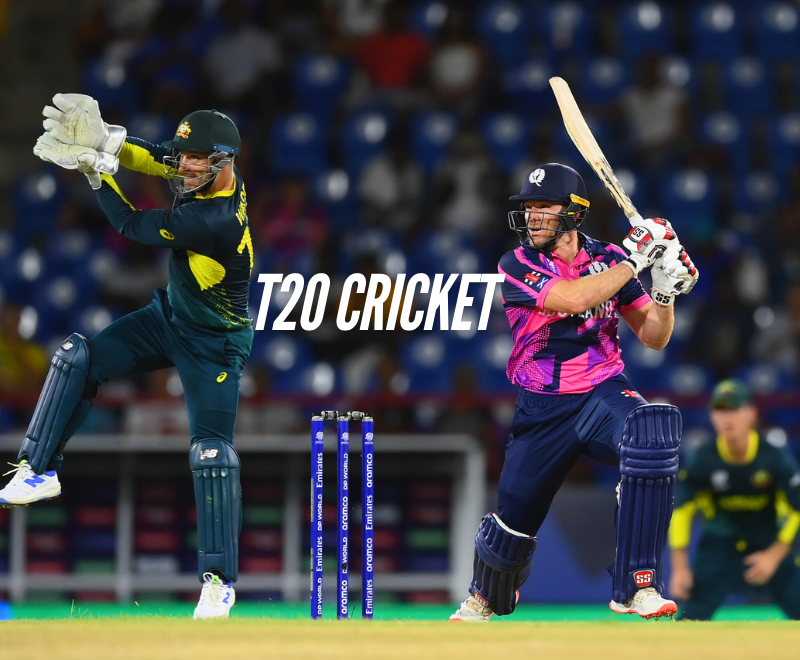T20 cricket has rapidly evolved into one of the most popular formats in the world. Introduced as a shorter alternative to Test and One-Day cricket, the Twenty20 format (T20) has revolutionized the way the game is played, watched, and marketed. With matches lasting just three hours, T20 cricket has managed to attract new fans, increase player earnings, and establish franchise leagues like the Indian Premier League (IPL), which have reshaped cricket’s economy.
This blog explores the history, growth, impact, and challenges of T20 cricket, and looks at how the format is shaping the future of the sport.
What Is T20 Cricket?
T20 cricket, short for Twenty20, is a format in which each team plays a maximum of 20 overs. This shorter format was designed to deliver quick entertainment, with each match taking about three hours—a perfect duration for modern-day fans who prefer fast-paced sports events.
- First Official T20 Match: The first professional T20 match was held in 2003 as part of England’s domestic competition.
- First T20 International: In 2005, Australia and New Zealand played the first T20 International (T20I), kick-starting the format’s global journey.
T20’s success lies in its intensity and unpredictability, forcing teams to adopt aggressive strategies right from the start. Every ball counts, and the high scoring rates and close finishes make it an exciting spectacle for fans.
The Impact of T20 on Global Cricket
T20 cricket has had a transformational impact on how the sport is played and perceived worldwide. It has also changed how players, fans, and governing bodies engage with the game.
1. Broadening Cricket’s Global Appeal
T20 cricket has introduced the game to new markets and audiences, particularly in regions where cricket struggled to gain traction.
- USA and UAE: Franchise leagues like Major League Cricket (MLC) in the USA and Abu Dhabi T10 in the UAE are helping cricket expand to non-traditional markets.
- Accessible Format: The short duration of T20 matches makes them easier to follow, allowing broadcasters to air games during prime time.
This format’s global success has encouraged governing bodies to explore the inclusion of T20 cricket in the Olympics, which would further boost the game’s popularity.
2. Changing the Way Players Train and Play
T20 cricket demands specialized skills and fitness levels. Players must be adaptable and able to perform under pressure, often within the space of just a few deliveries.
- Power-hitters: Players like Andre Russell and Glenn Maxwell excel at hitting sixes under pressure.
- Versatile all-rounders: Cricketers such as Ben Stokes and Hardik Pandya provide balance by contributing both with the bat and ball.
Bowlers also need to innovate, using techniques like yorkers, slower balls, and knuckleballs to restrict scoring.
The Growth of T20 Franchise Leagues
Franchise T20 leagues have become the economic backbone of modern cricket, providing opportunities for both players and investors.
The Indian Premier League (IPL): The Flagship T20 League
Since its inception in 2008, the IPL has grown into the most successful and lucrative cricket league in the world.
- Massive Fan Base: The IPL attracts millions of viewers globally, thanks to its star-studded teams and celebrity ownership.
- Economic Impact: The league has turned cricket into a multi-billion-dollar industry, generating huge revenues through sponsorships, broadcasting rights, and
merchandise.
Players from all over the world dream of playing in the IPL, as it offers lucrative contracts and exposure to global audiences.
Other Major T20 Leagues
Following the IPL’s success, other countries launched their own T20 leagues to capitalize on the growing demand for shorter-format cricket.
- Big Bash League (BBL): Australia’s premier T20 league, known for its entertainment-driven matches and fan-friendly atmosphere.
- Pakistan Super League (PSL): A highly competitive league that has uncovered emerging talents for Pakistan’s national team.
- The Hundred (England): An innovative league with a new twist, aiming to attract younger audiences with 100-ball matches.
These leagues not only develop local talent but also foster cross-cultural exchanges by bringing international players together.
How T20 Cricket Has Transformed Player Careers
The rise of T20 cricket has redefined career paths for cricketers, providing new opportunities and challenges.
T20 Specialists and Changing Career Models
Many players now focus solely on T20 cricket, becoming specialists in the format. Legends like Chris Gayle have built their careers by excelling in T20 leagues, earning fame and fortune along the way.
- Increased Earnings: Top T20 cricketers earn millions from league contracts, endorsements, and prize money.
- New Career Opportunities: Retired players also benefit by participating in T20 leagues as coaches and mentors.
While players earn more in T20 cricket, the tight schedules also mean higher risks of burnout and injuries.
The Entertainment Factor: Blending Cricket with Showbiz
One of the key reasons for T20 cricket’s popularity is its ability to blend sport with entertainment. Franchise leagues create a festival-like atmosphere with music, performances, and interactive fan engagement.
- Celebrity Owners: High-profile figures like Shah Rukh Khan (Kolkata Knight Riders) and Preity Zinta (Punjab Kings) have brought glamour to the game.
- Opening Ceremonies: Leagues like the IPL feature grand ceremonies with musical performances and fireworks.
- Social Media Engagement: Teams and players actively engage with fans on social platforms, creating a deeper connection.
Challenges Facing T20 Cricket
Despite its success, T20 cricket presents several challenges for the sport’s governing bodies.
Balancing T20 with Traditional Formats
While T20 cricket continues to grow, there are concerns about its impact on Test and ODI cricket.
- Declining Interest in Tests: Test matches struggle to attract audiences, especially among younger fans.
- Player Fatigue: Many players face burnout due to the packed T20 schedules, affecting their performance in international fixtures.
Boards like the BCCI and ECB are working to maintain a balance between T20 leagues and international cricket by introducing workload management programs.
The Future of T20 Cricket
The future of T20 cricket looks promising, with exciting developments on the horizon.
Expansion into New Markets
Cricket boards are focusing on expanding T20 leagues to North America, Europe, and the Middle East. The Major League Cricket (MLC) in the USA is a step toward establishing cricket in non-traditional regions.
T10 Cricket: A New Frontier
T10 cricket, the shortest format, is gaining popularity, with leagues like the Abu Dhabi T10 drawing global attention. This format could attract even more viewers by offering ultra-fast matches.
Growth of Women’s T20 Leagues
The rise of women’s T20 leagues, such as the Women’s Premier League (WPL), is driving greater gender equality in the sport. With more sponsorships and broadcasting deals, women’s cricket is set to grow rapidly.
T20 Cricket’s Lasting Legacy
T20 cricket has transformed the sport by bringing in new fans, players, and investments. With its fast-paced gameplay, entertainment value, and economic impact, the format is here to stay.
While challenges remain in balancing T20 with traditional formats, cricket’s governing bodies are working to ensure the sport’s sustainable growth. As the format continues to evolve, T20 cricket will remain a driving force in shaping the future of the game.
Whether it’s the excitement of the IPL or the charm of local T20 leagues, the format has something for everyone—a perfect blend of sport and entertainment.

